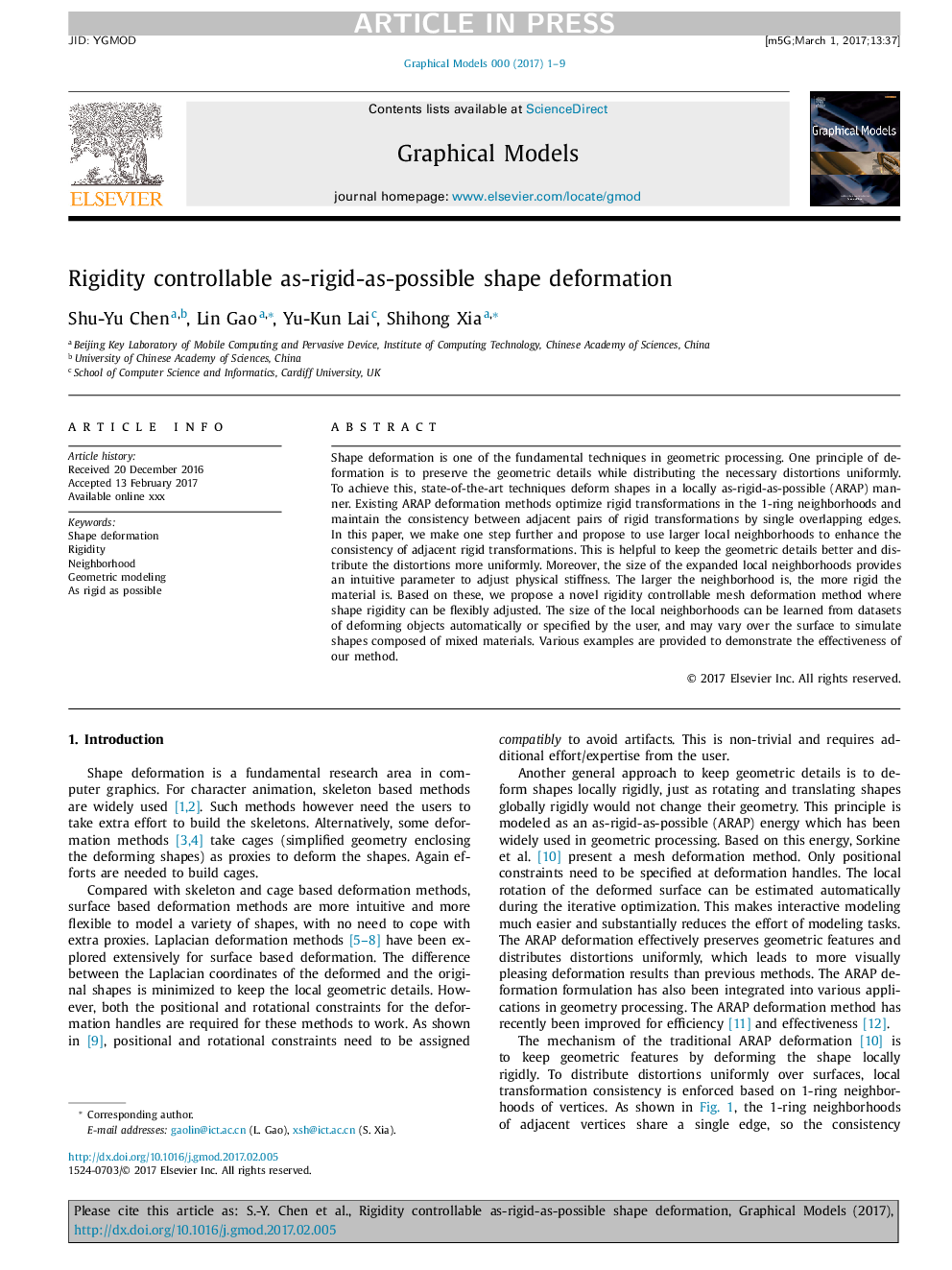| Article ID | Journal | Published Year | Pages | File Type |
|---|---|---|---|---|
| 4952914 | Graphical Models | 2017 | 9 Pages |
Abstract
Shape deformation is one of the fundamental techniques in geometric processing. One principle of deformation is to preserve the geometric details while distributing the necessary distortions uniformly. To achieve this, state-of-the-art techniques deform shapes in a locally as-rigid-as-possible (ARAP) manner. Existing ARAP deformation methods optimize rigid transformations in the 1-ring neighborhoods and maintain the consistency between adjacent pairs of rigid transformations by single overlapping edges. In this paper, we make one step further and propose to use larger local neighborhoods to enhance the consistency of adjacent rigid transformations. This is helpful to keep the geometric details better and distribute the distortions more uniformly. Moreover, the size of the expanded local neighborhoods provides an intuitive parameter to adjust physical stiffness. The larger the neighborhood is, the more rigid the material is. Based on these, we propose a novel rigidity controllable mesh deformation method where shape rigidity can be flexibly adjusted. The size of the local neighborhoods can be learned from datasets of deforming objects automatically or specified by the user, and may vary over the surface to simulate shapes composed of mixed materials. Various examples are provided to demonstrate the effectiveness of our method.
Related Topics
Physical Sciences and Engineering
Computer Science
Computer Graphics and Computer-Aided Design
Authors
Shu-Yu Chen, Lin Gao, Yu-Kun Lai, Shihong Xia,
